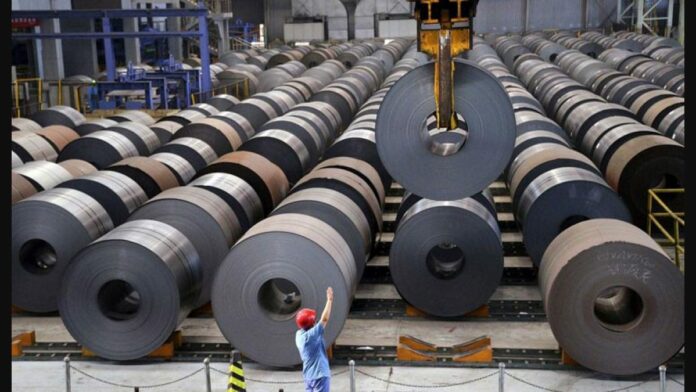After hitting the economy in the first two Covid waves, governments at the center and in the states have been disciplining the current expansion of the omicron variant to keep the industry and manufacturing activities afloat.
In a recent report, Moody’s Investors Service said that sustainable improvements in vaccination and rising government spending on infrastructure would help bring about a sustainable recovery in India’s economy. This will increase the demand for steel and cement required for infrastructure and construction activities.
Improvements in steel production and distribution are made possible by the efficient movement of raw materials from the mines and ports and the delivery of finished products from the mills in large quantities by rail, road, and water transport.
However, at the same time, the country needs to import 4.75 metric tonnes of high-grade steel, for which it needs to build domestic capacity. The Production Linked Incentive (PLI) project for the industry is expected to fill the capacity gaps in specialty steel and increase production from 18 MT to 42 MT in five years.
Tata Steel says: With strong research and development support, we have launched several value-added products. We are moving into innovative steel grades for future mobility needs and developing alternatives to imported steel grades in the construction sector.”
Similarly, as JSW Steel seeks to increase its output from 28 MT to 37.5 MT by 2024-25, the country continues to focus on the development of import-dependent steel grades. As the company released other new products, including electrical steel grades for general engineering applications, the company introduced a few new grades last year, including high-strength alloy steel and galvanized ultra-low-carbon grade for automotive OEMs.
Meanwhile, steelmakers are reassured by the Reserve Bank’s observation that the trajectory of omicron detected in the third wave will not adversely affect the overall demand for resistance.
On the contrary, the demand for steel, which was earlier suspended, is now being met. The forecast of the Ministry of Steel for 2021-22 is likely to prove that the production and demand of 120 MT and more than 100 MT respectively are correct.
One worrying thing, as we move forward, will be the behavior of steel prices by the end of October, which began to soften by the end of December. The fall in hot-rolled coil prices by 12 to 14% is undoubtedly linked to lower prices for two major steel-making materials, iron ore, and metallurgical coal.
Correction in raw material prices is expected to reduce China’s steel output to 1.03 billion tonnes in 2021 for the first time in six years as Beijing seeks to contain emissions.
According to the government, Chinese steel production is likely to decline further by 2022. For environmental considerations, South Korea is also cutting back on steel production.
Follow and connect with us on Facebook, LinkedIn & Twitter

